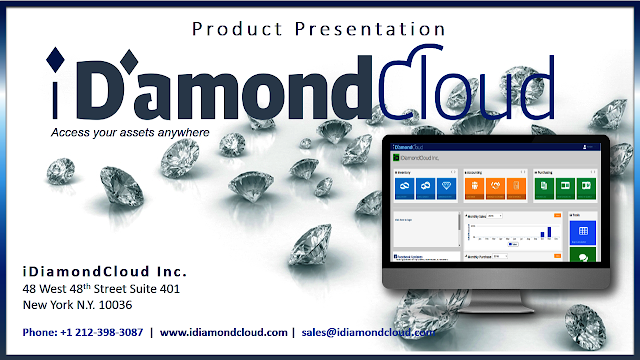The Future European Union Jewelry Market
Worldwide jewelry sales is still on the rise and were estimated at € 119 billion in 2007. The main markets were USA (€ 36.0 billion), EU (€ 23.9 billion), Middle East(€ 11.4 billion) and, since 2005, China (€ 10.4 billion) and India (€ 9.7 billion). Together these markets accounted for nearly 75% of global jewelry consumption. Since 2003, worldwide sales have increased by an average annual rate of 3.9%, because of a rapid growth of the Chinese and Indian markets. According to a survey of KPMG, it is expected that Chinese and Indian jewelry markets together will be the equivalent of the USA market by 2017.
In 2007, gold and diamond jewelry accounted for 80% of worldwide jewelry value sales. While by volume, costume and silver jewelry form the largest part. Jewelry sales is expected to grow further driven by a growing middle and upper class, particularly in Asian countries. EU consumers have become more affluent and fashion conscious, especially in the new member states. Even if the growth was not as robust as in Asia, the EU was the second largest world jewelry market and accounted for 20% of world jewelry sales in 2007.
In 2007, EU consumers spent € 23.9 billion. With a population of 496 million, the consumption per capita in the EU averaged around € 48.3. This was much higher in Luxembourg, Cyprus, Greece, Malta and Italy due to a high share of precious jewelry sales. Except Slovenia, the 10 new member states had a much lower per capita consumption (between € 5.0 to 13.9), which illustrates the large differences between EU countries. The EU jewelry market is dominated by four countries, which accounted for nearly 70% of total EU consumption by value in 2007. These markets were Italy (21.9%), UK (17.5%), France (17.4%) and Germany (13.3%), while the new EU member states together represented just 4.5% of the total EU market.
The UK, Ireland, Spain, Greece, the Netherlands, Scandinavia and the new EU member states, experienced the largest increases between 2003 and 2007. This was mainly due to a growing middle class, more women at work, having more money to spend, and to more variety in jewelry. There is now more design in jewelry items and colors match better to the fashion colors. Wearing jewelry is not only linked anymore to special occasions. Jewelry is worn every day and women have started to buy precious jewelry items that go well with their outfits. Stimulated by retailers’ promotion, people also tend to buy jewelry as a gift and tend to do this more impulsively than before.
These developments have been the main drivers of EU jewelry sales, which increased by an average annual rate of 0.9%, from € 23,122 to 23,955 million, between 2003 and 2007. The growth in precious jewelry sales and the substantial growth figures in some of the Baltic States can be partly explained by price inflation. Nevertheless, this does not diminish the importance of market growth in new member States. Especially here, consumer confidence has increased. Between 2003 and 2007, jewelry value sales of the new member states rose by an annual average of 4.6%, from € 909 to 1,087 million.
However, most other EU countries, especially Italy, Germany, UK and Spain, were affected by the global credit crisis, as well as a slump in consumer demand. People in the low-medium segment reduced their spending on jewelry due to price increases on fuel and other basic commodities. The recession of 2007/2008 and the high price of precious metals have weakened sales of gold, platinum and diamond jewelry in these segments.
Fashion conscious consumers have now moved to designer jewelry and will be more conscious on price and less on material content. Here costume or silver jewellery offer good alternatives and palladium will be an alternative as a cheaper precious metal for white gold or platinum.
For the EU market, estimates of the value of sales indicate a slowdown in precious jewellery sales until 2010 in the large EU markets and some modest increases in the Eastern EU states. While for costume jewelry some increases are expected between 2007 and 2011.
The future EU jewelry market will be mainly driven by:
• A grading up of costume jewelry instead of the mass produced budget pieces from Asia.
• There will be also more demand for jewelry with fusions of (precious) material and combinations with gemstones in different shapes or colors.
• Older (working) women being fashion aware over a longer period of time.
• More design features in jewelry using less expensive (lightweight, hollow or woven) precious metals dressed up by colored stones.
• More personalised jewelry in terms of (unique) design, charms or unusual shapes.
• Opposite to the short life cycles of jewelry, people now prefer to look for quality pieces at an affordable price that they can use longer. This trend was most apparent in Germany, France and the Scandinavian countries.
• New retail outlets, particularly by luxury goods manufacturers, continue to open in the new member states. This will also drive the market further in these countries.
• More integration of jewelry into other fashion accessories (handbags, belts, footwear), eyewear and into electronics (ear buds, clever tag pendants)


Comments
Post a Comment